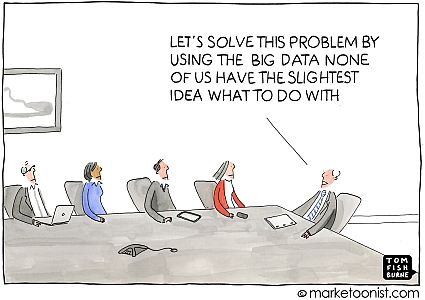We are blessed with enormous amounts of data on virtually everything. Data on our customers, their markets, their industries and competitors. Data on their engagement with us, content they consume, interactions virtually or with our people. Data on their experience in using our products and solutions. We even have data on their individual and organizational behavioral styles.
As managers, we have data about our people and their performance that we have never had before. Endless data on activities, whether dials, emails, meetings, proposals. We have pipeline and prospecting data, win rates. We have conversational intelligence about the words, questions and conversations our people have with our customers. We have historical performance data, behavioral style information, and more.
The availability of data, whether about our customers, markets, competitors, industries, or our people is astounding. One would think that this offers us tremendous insight and performance advantage.
Yet we still struggle.
Sadly, despite the availability of this data, too few make use of it. I talk to sellers about their opportunities, “What are the key business issues, what’s been their performance, how can we help them…..” Too often, they are unaware or choose to ignore the data. Likewise, when I talk to managers, I ask about their people and performance, “What are win rates, average deal sizes, sales cycle….. Are they producing the critical outcomes and how are you measuring those…..” Too often, I get a blank/impatient stare, “Why are you talking about all this stuff, they need to hit their goals!”
We even see data on macro trends. Customers with no decision made, customers preferring rep free buying experiences, percent of sellers making quota, average tenure, voluntary attrition, customer/employee sat. But too ofen, it seems we fail to act based on what that data is demonstrating.
Despite ever increasing availability of data, we don’t seem to be leveraging it to improve individual and organizational performance.
I think there a a couple of factors that impact our ability to effectively leverage the massive amounts of data available.
Most fundamentally, we don’t what the numbers mean. We don’t know what causes the numbers we are seeing. We don’t know what drives how changes in those numbers might impact performance. We don’t know which numbers provide the greatest leverage for performance.
For example, we can might see a customer’s top and bottom line growth slowing, COGs increasing, cash flow problems, delayed product launches, receivables increasing, and other performance data, but we cannot connect the dots to say, “This is how we can help you increase revenue or better manage costs or improve……
Or we see declining quota performance, unhealthy pipelines, declining win rates, increasing sales cycles and we cannot connect the dots to say, “Let’s focus on improving your ability to qualify opportunities….. Let’s improve your ability to have higher impact sales calls……” Instead, our coaching is usually to do more.
We provide endless reports and analyses, but we don’t know what to do about them.
A critical gap in the development of both our people and our managers is helping them understand the data they have available to them. how to understand why we see the numbers we do, or how to look at what it means and what to do about it.
Some of this comes under the labels of business and financial acumen. This helps us better understand our customers, what’s happening to them, and how we can engage them in business focused discussions about their performance. The data gives us clues, but we have to translate those clues into conversations about what it means and how things might change.
Tied to this is skills development in critical thinking, problem solving, and collaborative conversations.
All of these skills are foundational skills for managers. But they need to go beyond this, focusing on understanding the data and how to leverage it in driving organizational and individual performance. They have to learn how to use frameworks like the Sales Execution Framework (SEF) to connect the data to the highest leverage performance improvement opportunities.
Revenue leadership, ops, and enablement must put together programs giving their people the skills to understand and leverage the data in the most impactful ways. Yet, based on my informal studies, fewer than 5% of these organizations do anything about this.
The must change—that’s what the data is telling us.

Leave a Reply